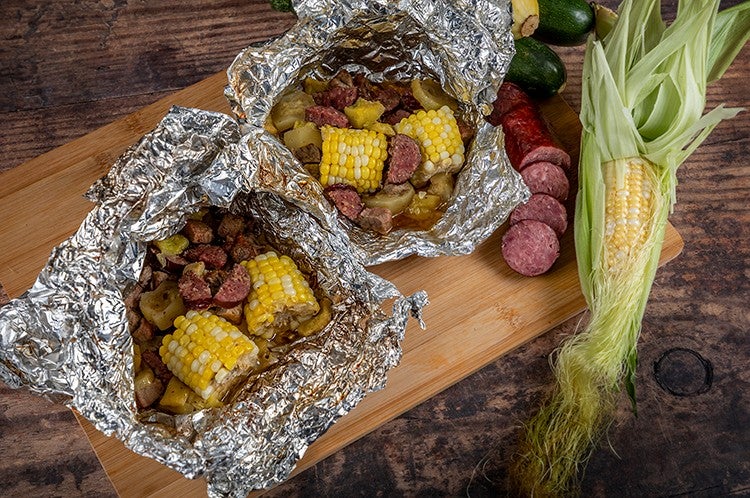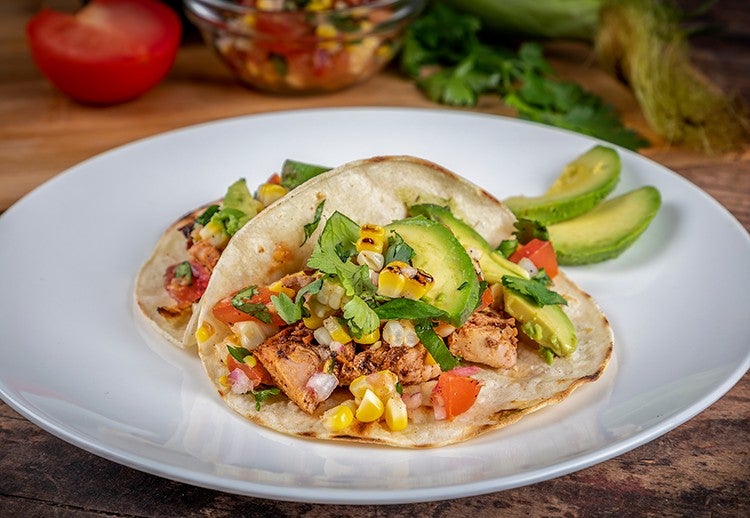There are many sights, sounds and smells that invoke summer. Boats on the water. Young entrepreneurs hustling at street-side lemonade stands. Fireworks on the Fourth of July. Sunscreen-covered skin that hosts bug spray by night. The perfectly swirled ice cream cone. And, of course, smoke rising from the grill!
July is National Grilling Month. While many North Dakotans can say they grill year-round (snow won’t stop us!), our grills get a workout this month. Before you can enjoy the tastes of summer, make sure to follow these grilling and food safety recommendations from the Food and Drug Administration (FDA) and U.S. Department of Agriculture (USDA) Food Safety and Inspection Service (FSIS).

Always keep your raw meat, poultry and seafood items separate from ready-to-eat foods, such as salads, dips and even any fruits and vegetables you plan on grilling. As soon as you put raw items on the grill, get a clean plate or serving dish ready for when the items are done. You should also pay attention to the utensils used while grilling – those tongs you used to place those raw burgers on the grill could be contaminated with harmful bacteria, which could spread to the fully cooked burgers being pulled off the grill. Ultimately, it is NOT safe to use the same plate or utensils you originally used to place raw items on the grill, unless they have been fully washed and sanitized.

No matter what you’re grilling, always start with clean hands. You should especially wash your hands before and after touching raw meat, poultry and seafood items to prevent the spread of foodborne-illness bacteria. When it comes to washing food items, you should wash some, but not others:
• Always wash fruits and vegetables before preparing. Run fruits and vegetables under clean, running water and gently rub to remove any debris. If you are using firm fruits and vegetables, such as melons and zucchini, use a vegetable brush to scrub. Dry fruits and vegetables with a clean cloth or paper towel to further reduce bacteria that may be present.
• Never wash or rinse meat, poultry or seafood items. Doing so greatly increases your risk of cross-contamination because bacteria can be spread to other foods, utensils and surfaces. If you must rinse your meat or poultry because of a marinade or brine, be sure to thoroughly clean and then sanitize all surfaces, including the inner sink, to eliminate the risk of cross-contamination.
Grilling uses direct high heat to cook items – it’s what gives them the classic grill marks that everyone loves to see. However, those marks can make items look done before they actually are. This can be a major safety issue! When grilling meat, poultry and fish, it’s important to use a food thermometer to make sure your items are truly being cooked through to a safe minimum internal temperature.
See the chart at the bottom of this page for protein-specific safe cooking temperatures.
When grilling fruits and vegetables, there are a few things to keep in mind:
• Marinating vegetables is a great way to infuse flavor and moisture into your vegetables before cooking on the grill – but never use leftover marinade that has been used for raw meat, poultry or seafood items.
• While fruits and vegetables may not have to reach a safe minimum internal temperature the same way meat, poultry and seafood do, different fruits and vegetables will have different cooking times. Thicker cut fruits and vegetables, and denser vegetables (such as potatoes), will take longer to cook. Because of the high heat of the grill, this can result in a thoroughly cooked outside but an uncooked inside of the fruit or vegetable. For more even cooking, cut fruits and vegetables into smaller pieces and use a medium to low grill temperature.

SOURCE: FDA and USDA FSIS
Download your free cookbook from 2018's recipes!
Download all recipe books from 2014 to 2018 at this page!
We pay $50 for publishing your recipes! Submit your recipe or email to NDL@ndarec.com or mail to North Dakota Living, PO Box 727, Mandan, N.D. 58554. Please include your name, address, daytime telephone number, email address and if you are a member of an electric or telecom cooperative.

Combine beef and vegetables in a large bowl. Add oil and seasoning, tossing to coat.
Preheat grill to medium heat, approximately 350 degrees.
Divide beef and vegetable mixture onto four large squares of heavy-duty aluminum foil. Fold right and left edges in and roll together to close. Fold top and bottom edges in and roll to close each packet. Grill for 10-12 minutes until vegetables are tender.
NOTE: Packets can also be prepared in a 350-degree oven, baking for 10-12 minutes.
North Dakota Beef Commission

TACOS
2 pork tenderloins, 12-16 oz. each
Corn tortillas
8 sprigs cilantro, roughly chopped
2 avocados, sliced
1 T. red chili powder
1 T. chipotle chili powder
½ T. smoked paprika
½ T. white pepper
1 tsp. black pepper
1 T. sugar
Kosher salt, to taste
GRILLED CORN SALSA
2 large ears corn
¼ red onion, diced
2 tomatoes, diced
1 jalapeño pepper, seeded and minced
Lime, juiced
⅓ c. cilantro, chopped
Salt and pepper, to taste
Tacos: Combine chili powders, paprika, peppers, sugar and salt in a bowl and coat the meat with the rub mixture. Cover and marinate for at least 15 minutes, or up to 12 hours or overnight. Place meat on grill over medium-high heat, searing on both sides, about 2-3 minutes per side. After searing, turn off a burner to set up grill for indirect cooking, moving the tenderloins to indirect heat, or continue cooking over low heat. Cook tenderloins until pork temperature registers 145 degrees on a meat thermometer, about 20-27 minutes. Remove from grill.
Let meat rest for 10 minutes. Slice or chop tenderloin into desired form for tacos. Serve with warm corn tortillas, cilantro, salsa and sliced avocados.
Grilled Corn Salsa: Grill corn, husk on, until charred. Then shuck the corn, and grill for a little color, about 2-3 minutes. Cool to touch, then slice corn off the cob. Add corn and remaining ingredients to bowl. Stir and adjust seasonings, to taste.
Adapted from Pork Checkoff, through partnership with Yummly.








